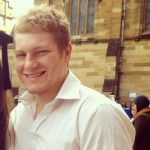Mentally Ill Disproportionately Killed by Police

Recently released statistics suggest that more than half of the people shot dead by NSW police over the past twenty years were suffering from a mental illness.
The data was obtained by Greens MP David Shoebridge through the Government Information Public Access Act (GIPAA).
NSW statistics
Mr Shoebridge served a GIPAA request on the NSW Police Force for details of all fatal police shootings, and whether the deceased had been diagnosed as mentally ill.
He served the request in the wake of the fatal shooting of Danukul Mokmool at Central Station on 26 July 2007. The 30-year old was shot four times by transport police after attacking a store owner with a pair of scissors and then slashing himself while suffering paranoid delusions.
“When I saw the fatal shooting at Central Station of what looked like a clearly mentally ill man surrounded by police, holding a pair of scissors, it immediately brought to mind the death of Roni Levi on Bondi Beach,” Mr Shoebridge said.
“Whilst 20 years separated them, it didn’t seem like a lot had changed in terms of the police reaction.”
The NSW Police Force ultimately provided details of 35 people, at least 19 of whom – or 54% – had a mental illness.
Across the nation
The Australian Institute of Criminology recorded 105 incident between 1989/90 and 2010/11 whereby Australian police officers fatally shot individuals. 44 of those people had been diagnosed with a mental illness, with psychotic disorders such as schizophrenia being the most common.
A separate study in 2010 by researchers at Monash University looked at fatal shootings by Victorian police between 1982 and 2007, concluding that mentally ill people were “significantly overrepresented” in fatal shootings. The overrepresentation was particularly prevalent amongst those with psychosis and schizophrenia, whose sufferers were respectively 11.3 and 17.3 times more likely to be shot dead than members of the general population.
Influential factors
Mr Shoebridge believes there are two primary driving forces behind the situation.
“We’ve got a tragic under-resourcing of mental health facilities, and it’s not just in NSW, that’s a nationwide problem,” he explained.
“That means that frontline police are the frontline responders and those primarily relatively junior police are going out there, dealing with mentally ill people and, to be quite frank, they haven’t got the training and they haven’t got the support.”
“You put those two things together, you have a very potent, tragic, often-fatal mix”.
Police response
NSW Police Commissioner Michael Fuller acknowledges the overrepresentation, although he asserts the actions of police officers have been warranted.
“I just want to give the community of NSW an assurance that we are not hiding from oversight in terms of the way we use force,” he stated.
“But in many cases, whilst we will get recommendations from the coroner and things that we can improve, rarely has there been a finding by a coroner or otherwise that it was an unlawful shooting — as tragic as that may be.”
Mr Fuller did not agree that frontline police in our state require additional training to deal with those suffering from mental illnesses.
Additional training
In accordance with recommendations by the mentioned 2010 Monash University study, Victoria police introduced a training program designed to help officers deal with unstable members of the public.
“They now have action-based training scenarios that involve interacting with people with mental illness”, said the study’s author Professor James Ogloff.
“When people are typically in a crisis what happens is they’re not terribly rational and the normal way police deal with people may not be effective.”
NSW has failed to follow suit, with senior officers denying that such measures are necessary. Since 2014, police officers in our have received one full day’s training through the force’s Mental Health Intervention Team. But many believe this is woefully insufficient.
According to Mr Shoebridge, “The idea that one day’s training on mental health will appropriately skill police constables to deal with the repeated interactions they have with mentally ill people in the community is laughable”.
Tough on crime policing
Criminologist and former police officer Terry Goldsworthy believes the number of fatal police shootings is partly attributable to the government’s ‘tough on crime’ approach.
According to Goldsworthy, measures such as new ‘shoot to kill’ laws, immunity from prosecution for officers who act negligently and the targeting of particular groups has contributed to a ‘shoot first and ask questions later’ mentality – rather than an emphasis on defusing situations.
Like many, the former officer is calling for a greater emphasis on de-escalating potentially dangerous situations, with a view to ensuring all parties are kept as safe as the given situation permits.







